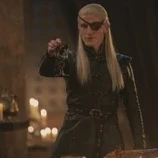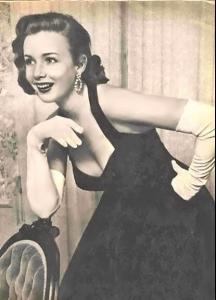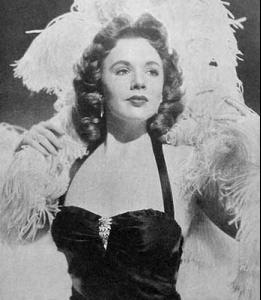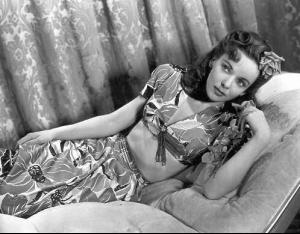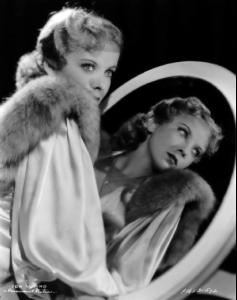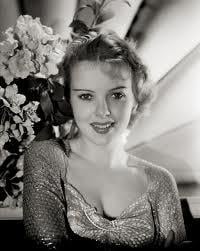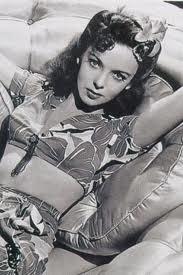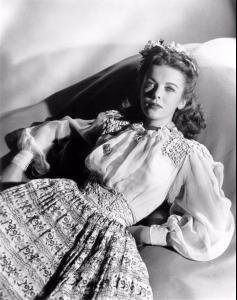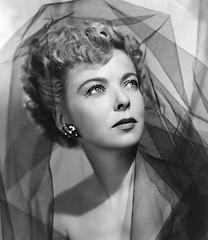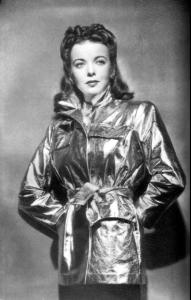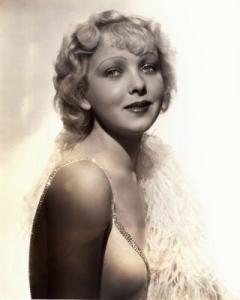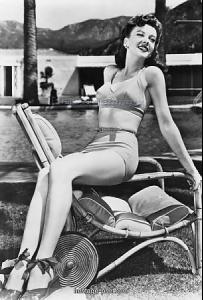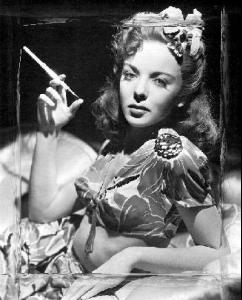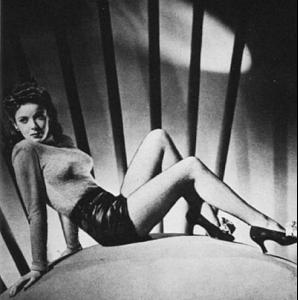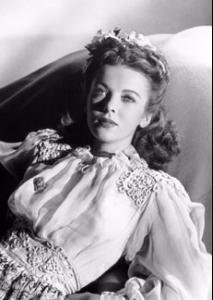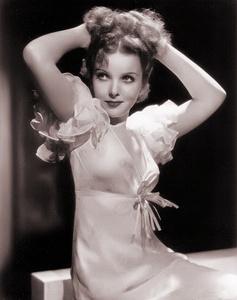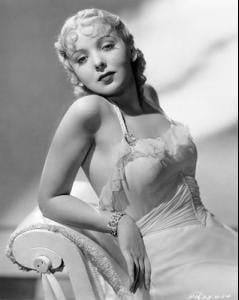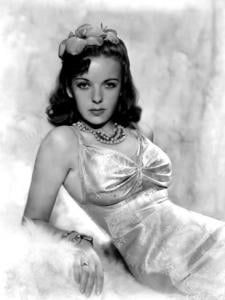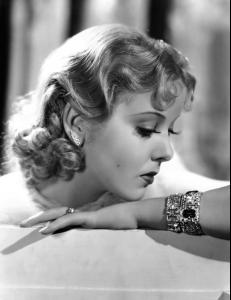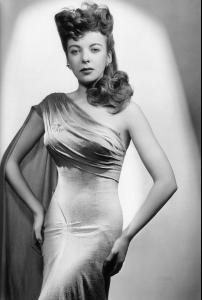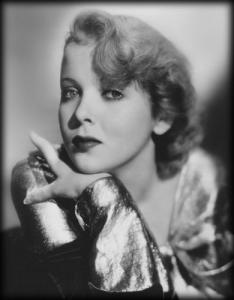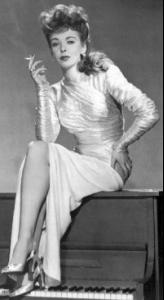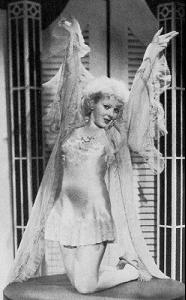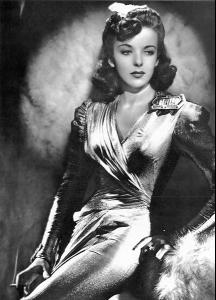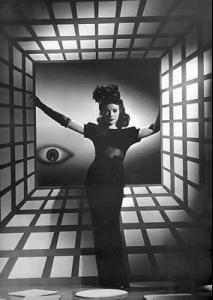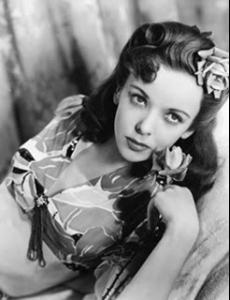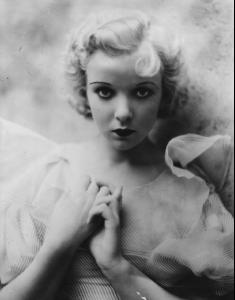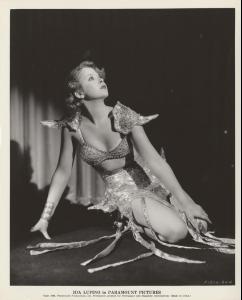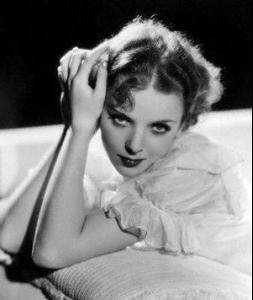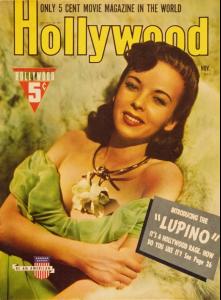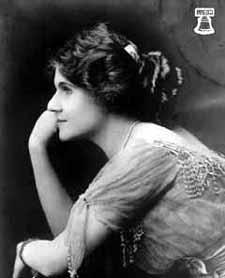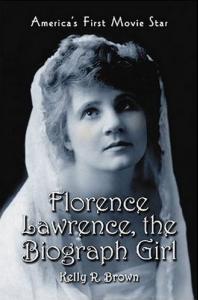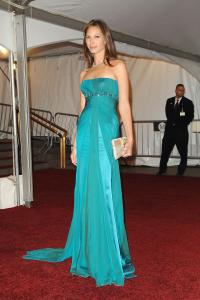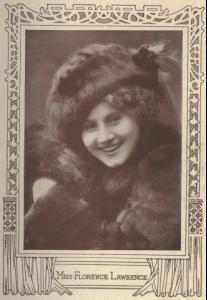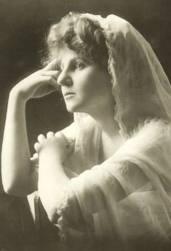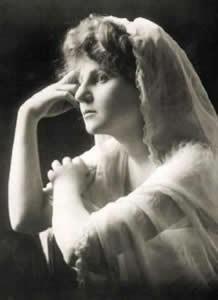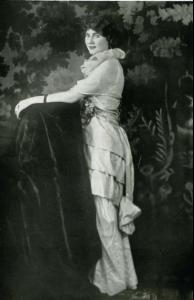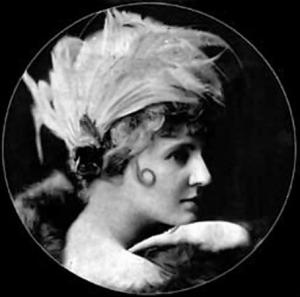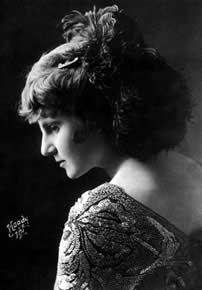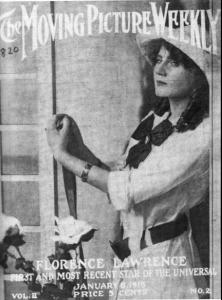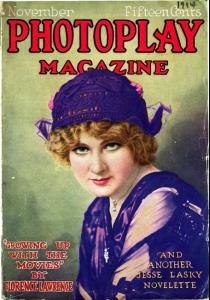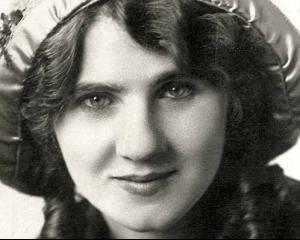
Everything posted by COP11
-
Piper Laurie
Piper Laurie (born Rosetta Jacobs; January 22, 1932) is an American actress of stage and screen known for her roles in the television series Twin Peaks and the films The Hustler, Carrie, and Children of a Lesser God, all of which brought her Academy Award nominations. In 1991, she won a Golden Globe Award for her portrayal of Catherine Martell in Twin Peaks. Early life Laurie was born in Detroit, Michigan, the daughter of Charlotte Sadie and Alfred Jacobs, a furniture dealer. Her grandparents were Jewish immigrants, from Poland on her father's side and Russia on her mother's. Her father moved the family to Los Angeles, California in 1938. The young Rosetta was red-haired and naturally attractive, but socially hesitant. She attended Hebrew school, and to combat her shyness her parents provided her with weekly elocution lessons; this activity eventually led her to minor roles at nearby Universal Studios. Career In 1949, Rosetta Jacobs signed a contract with Universal Studios, in which her screen name was changed to Piper Laurie, by which she has been known professionally since then. Her breakout role was in Louisa, with Ronald Reagan (whom she dated a few times before his marriage to Nancy Davis). Several other roles followed: Francis Goes to the Races (1951, co-starring Donald O'Connor); Son of Ali Baba (1952, co-starring Tony Curtis); and Ain't Misbehavin' (1955, co-starring Rory Calhoun). In an attempt to enhance her public image, Universal Studios told gossip columnists that Laurie bathed in milk and ate flower petals, to protect her luminous skin. Discouraged by such vapidity and by the lack of substantial roles,[5] she relocated to New York City to study acting and to seek work on the stage and in television. She appeared in Twelfth Night, produced by Hallmark Hall of Fame; in Days of Wine and Roses with Cliff Robertson, presented by Playhouse 90 on 2 October 1958; in Winterset, presented by Playhouse 90 in 1959. She was again lured to Hollywood by the offer to co-star with Paul Newman in The Hustler, which was released in 1961. She played Newman's crippled girlfriend, Sarah Packard, and for her performance she received an Academy Award nomination for Best Actress. Substantial movie roles did not come her way after The Hustler, so she and her husband moved to New York State. However, she was offered, and accepted, the role of Margaret White, the authoritarian and fanatically religious mother of Carrie, in the movie of that name which was released in 1976. She received an Oscar nomination (Best Female Supporting Actor) for that role. After her 1981 divorce, Laurie relocated to California. In 1986, she received a third Oscar nomination for her portrayal of Mrs. Norman in Children of a Lesser God. That same year she was awarded an Emmy for her performance in Promise, a Hallmark Hall of Fame television movie which also starred James Garner and James Woods. In 1965, she starred in a Broadway revival of Tennessee Williams' The Glass Menagerie opposite Maureen Stapleton, Pat Hingle and George Grizzard. She had a featured role in the Off-Broadway production of The Destiny of Me in 1992, and returned to Broadway for Lincoln Center's acclaimed 2002 revival of Paul Osborn's Morning's at Seven with Julie Hagerty, Buck Henry, Frances Sternhagen and Estelle Parsons. In 1964, Laurie appeared in two medical dramas, as Alicia Carter in the episode "My Door Is Locked and Bolted" on the NBC series The Eleventh Hour and as Alice Marin in the episode "The Summer House" on the ABC program Breaking Point. Laurie appeared in the Australian film Tim (1979) opposite Mel Gibson. She starred as the devious Catherine Martell in David Lynch's television series Twin Peaks. Following the character's supposed death in a mill fire at the end of the first season, the actress (under heavy makeup) returned as "Fumio Yamaguchi," playing the mysterious Mr. Tojamura, who would eventually be revealed to be Catherine Martell in disguise. She also appeared in 1991's Other People's Money with Gregory Peck and in horror maestro Dario Argento's first American film Trauma, along with the director's daughter Asia Argento. Laurie portrayed the mother of George Clooney's character on ER. In 1998, she appeared in the sci-fi thriller The Faculty. She later made a series of guest appearances on television shows including Matlock, Frasier, State of Grace, Will & Grace, Cold Case, and Law & Order: Special Victims Unit. She returned to the big screen for independent films such as Eulogy and The Dead Girl. She has appeared in over 50 movies and scores of television shows. Personal life When The Hustler was being released (1961), Laurie was interviewed by New York Herald Tribune Entertainment writer Joe Morgenstern. She was attracted to him, and nine months after the interview they were married (January 21, 1962). When no substantial roles came her way after The Hustler, she and Morgenstern relocated to Woodstock, New York. A daughter, Anne, was born to the couple in 1971. In 1981 the couple divorced, after which she relocated to the Hollywood area and continued working in films and television. As of 2010, she still resides in Southern California; her daughter is in New York. Quote "Nobody thought of me as an actress. They just remembered that publicity story about my munching flower petals for breakfast. I even thought of giving up the name 'Piper Laurie' because I felt there was a stigma attached to it. I never could figure out just how many parts I lost and how many parts I won because of this name. I know some producers and directors said, 'Well, maybe she can act even if her name is Piper Laurie!'" Awards Laurie won an Emmy Award, for Outstanding Supporting Actress in a Miniseries or Special for her role in the 1986 TV movie Promise opposite James Garner and James Woods. In addition, she received several Emmy nominations, including one for playing in 1981 Magda Goebbels, wife of Joseph Goebbels, in The Bunker, opposite Anthony Hopkins as Hitler; for her role in the miniseries The Thorn Birds; two for her work in Twin Peaks and a nomination for her guest appearance on Frasier. She has been nominated for an Academy Award in three films. Filmography Year Title Role Notes List of film and television credits 1950 Louisa Cathy Norton 1950 The Milkman Chris Abbott 1951 Francis Goes to the Races Frances Travers 1951 The Prince Who Was a Thief Tina 1952 Has Anybody Seen My Gal? Millicent Blaisdell 1952 Son of Ali Baba Princess Azura of Fez/Kiki 1952 No Room for the Groom Lee Kingshead 1953 The Golden Blade Khairuzan 1953 The Mississippi Gambler Angelique 'Leia' Dureau 1954 Johnny Dark Liz Fielding 1954 Dangerous Mission Louise Graham 1955 Ain't Misbehavin' Sarah Bernhardt Hatfield 1955 Until They Sail Delia Leslie Friskett 1961 The Hustler Sarah Packard Nominated — Academy Award for Best Actress Nominated — BAFTA Award for Best Actress in a Leading Role Nominated — Golden Laurel Award for Top Female Dramatic Performance 1976 Carrie Margaret White Nominated — Academy Award for Best Supporting Actress Nominated — Golden Globe Award for Best Supporting Actress – Motion Picture 1977 Ruby Ruby Claire 1979 Tim Mary Horton 1983 The Thorn Birds Anne Mueller Television miniseries Nominated — Golden Globe Award for Best Supporting Actress – Series, Miniseries or Television Film Nominated — Primetime Emmy Award for Outstanding Supporting Actress in a Miniseries or a Movie 1984 Terror in the Aisles archival flashback 1985 Return to Oz Aunt Em 1985 Toughlove Darlene Marsh Television film 1985 The Twilight Zone Aunt Neva (segment "The Burning Man") Television series 1986 Children of a Lesser God Mrs. Norman Nominated — Academy Award for Best Supporting Actress 1986 Promise Annie Gilbert Television series Primetime Emmy Award for Outstanding Supporting Actress in a Miniseries or a Movie Nominated — Golden Globe Award for Best Supporting Actress – Series, Miniseries or Television Film 1988 Appointment with Death Emily Boynton 1989 Dream a Little Dream Gena Ettinger 1990–91 Twin Peaks Catherine Martell / Mr. Tojamura / Tojamura TV Series Golden Globe Award for Best Supporting Actress – Series, Miniseries or Television Film Nominated — Primetime Emmy Award for Outstanding Supporting Actress in a Drama Series (1990,1991) Nominated — Soap Opera Digest Award for Outstanding Actress : Prime Time (1991,1992) 1991 Other People's Money Bea Sullivan 1992 Storyville Constance Fowler 1992 Twin Peaks: Fire Walk with Me Catherine Martell / Mr. Tojamura / Tojamura her scenes were deleted from the final cut 1993 Wrestling Ernest Hemingway Georgia 1993 Trauma Adriana Petrescu 1995 The Grass Harp Dolly Talbo Southeastern Film Critics Association Award for Best Supporting Actress 1995 Fighting For My Daughter Judge Edna Burton Television film 1998 The Faculty Mrs. Karen Olson 2004 Dead Like Me Nina Rommey Television series 2004 Eulogy Charlotte Collins 2006 The Dead Girl Arden's Mother 2006 Cold Case Rose Collins Episode: "Best Friends" 2007 Hounddog Grammie 2008 Saving Grace Marta 2011 Hesher Madeleine Forney
- Continent's choice
-
Best of 2011 VSFS
Sui x3
-
Princess Ameerah al-Taweel
I love her Thanks Twinkle!
-
David Labrava
When the Sons of Anarchy need someone out of the way, they often turn to Happy Lohman, a brutal enforcer portrayed by David Labrava. As a member of the real motorcycle club, the Hell's Angels, Labrava was a technical adviser for "Sons of Anarchy" before he was cast as Happy. Within the show, Happy is one of the most feared members of SAMCRO, thanks to his love of violence and the fact that he tattoos a happy face on his body each time he kills someone. A fixture of "Sons of Anarchy" since the beginning, Labrava also co-wrote the most recent episode, "Hands" alongside Chris Collins and series creator Kurt Sutter; which has proven to be one of the most controversial installments of the season. Earlier this week, Labrava spoke with the press about his first involvement with "Sons of Anarchy" and his insights into Happy's psyche before addressing the fallout ahead for SAMCRO before the end of the season. Q: Can you talk a little bit about your love of motorcycles and how that came about? David Labrava: I was riding dirt bikes when I was a little kid. I got my first Harley Davidson when I was 17 years old. It was a frame with wheels and a tank on it and all the parts in a box. I got it for a great deal and six months later my mother is telling me to get it out of the living room. I have to build this outside; it’s stinking up the house. This is just what you go through if you are this person, you go through years of having motorcycles that’s been more in the garage than out on the road. It just takes a long time. It’s like you get bit by the bug and it won’t go away. Q: What is it about Biker culture that makes you want to come together in motorcycle clubs? David Labrava: First of all, I never think it’s a gang, because the gang is a street gang. You know the [difference] between a gang. I know the government likes to differentiate the clubs from the gangs, but it is really a motorcycle club and it’s kind of like the Army. Everyone is your brother. You have to love everyone, but there are so many guys, some of them really become your true friends. But everyone is your brother and we definitely have to be that kind of person. Some people are loners and some people identify with being in a group. They identify it and if you identify it, then you’ll find us and you’ll find a way to become one of us. Q: Is there anything special you had to do to become part of that? David Labrava: You have to be there. I have to say of the big clubs, all of them are run basically a little bit different. I’m in a very democratic club and you basically have to be there. You have to show support. You have to show us that this is what you want to do and it can take a few years to do that. But it isn’t like what you might think it is. It is nothing like the mob. It’s a motorcycle club and they do defense fund parties and they go on runs together and camp out. I’m sure it gets painted to be something way more vicious than it really, really is, but in any group, I don’t care if it’s the Girl Scouts or the Lion’s Eye Bank, there’ll probably be some bad apples, some good apples, some guys who do nothing and some guys who do everything. Q: How did the opportunity to act on "Sons of Anarchy" come about? David Labrava: Actually, it seems like the Hollywood thing sort of found me a couple times because I wasn’t living here trying to do this at all. I’m an artist. I’m a tatoo artist and I went to school to paint and that sort of thing. I started writing and getting published and I have to say I think every American kid grows up dreaming about being in the movies. That’s completely normal for us. But I mostly wanted to be a writer in my life and then I got taught the script writing program and I got a chance to act and I have to say the acting is extremely fun, extremely vital. It’s an incredible crew that I work with. They all have a great appreciation for film. Those people that you see, we do movie trivia all day long. Like [Ron Perlman] knows all the way to black and white. I enjoy the acting. I didn’t plan on that. It sort of fell into me and I’m having a lot of fun with it, but I’m definitely moving towards directing because I’m naturally a writer. And I think a good director edits, writes, has acted a little bit. He’s done a little bit of everything and that’s what I’m trying to do. I got hired to be the technical advisor [on "Sons of Anarchy"] and when Kurt [sutter] came up to my area to get some technical advice on the motorcycle club world, I showed him that I wrote scripts and I asked him to let me have a chance when he cast the show. I got cast on the show and then he gave me a real chance to write and here I am. Q: Tell us more about Happy. Who do you think this guy is and why does he enjoy killing people? David Labrava: I remember when Kurt [sutter] explained to me why I was called Happy. “Why didn’t you call me Psycho?” He’s like, “No, because your name is Happy, you’re an assassin for the club and you’re never happy. It’s like ironic.” Happy is just soldier. I look at Happy, he’s got his aunt and he has his mom, but the real family to Happy is that club. Those are his brothers. That’s his little world. He’s there to do whatever. He is an assassin for the club. This is a TV show, you know what I mean, and his character is this guy who’s like, he’s ready to do whatever for the club, whatever it takes. He’s gotten very good at it through time, that’s why he does lines like I’ll do this and I’ll do it very well and they know he will. Like in the beginning when Clay said, these guys are not killers. That’s why they’re having problems with the cartel. Like gun dealing is the extent of their ambitiousness and that’s why they have a guy like Happy. Although Clay has really emerged as evil personified for sure he has. It’s Happy’s calling to do whatever it takes that the club needs, which is a lot of time kill people.
- Misc. Images
- Runway
-
The New Faces Competition
Angelika x3
-
Actresses competition
Keira Lips: 4 Smile: 5 Hair: 4 Eyes: 4 Nose: 4 Body: 2 Karen Lips: 4 Smile:5 Hair: 5 Eyes: 4 Nose: 4 Body: 1
-
Joan Smalls
She looked amazing at VSFS
-
Shanina Shaik
Stunning girl I am starting to like her more and more
-
The Most Beautiful Eastern Asia Woman
Lucy x3
- Continent's choice
-
VS Pink Model Competition
Not sure what you mean but I will give a shot Joe Current 8 Alessandra Ambrosio Lily Aldridge Liu Wen Shanina Shaik Anais Mali Izabel Goulart Karmen Pedaru Joan Smalls All Time Naomi Campbell Stephanie Seymour Tyra Banks Gisele Bundchen Marisa Miller Jill Goodacre Yasmeen Ghauri Frederique van der wal FB-Yasmeen Ghauri SI Cover-Ashley Richardson Is this what you're looking for??
-
Ida Lupino
- Ida Lupino
- Ida Lupino
- Ida Lupino
Ida Lupino (4 February 1918 – 3 August 1995) was an English-born film actress and director, and a pioneer among women filmmakers. In her 48-year career, she appeared in 59 films and directed seven others, mostly in the United States. She appeared in serial television programmes 58 times and directed 50 other episodes. Additionally, she contributed as a writer to five films and four TV episodes. Acting career Lupino was born in 1918 into an English family of performers. Her father, Stanley Lupino, was a music-hall comedian, and her mother, Connie Emerald (1892–1959), was an actress. As a girl, Ida Lupino was encouraged to enter show business by both her parents and her uncle, Lupino Lane. She trained at RADA and made her first film appearance in The Love Race (1931), the next year making Her First Affaire. She spent the next several years playing minor roles. She moved to Hollywood in 1933. Following her appearance in The Light That Failed (1939) Lupino began to be taken seriously as a dramatic actress. As a result, her parts improved during the 1940s, and she described herself as "the poor man's Bette Davis." During this period, Lupino became known for her hard-boiled roles, as in such films as They Drive by Night (1940) and High Sierra (1941), both opposite Humphrey Bogart. For her performance in The Hard Way (1943), she won the New York Film Critics Circle Award for Best Actress. She worked regularly and was in demand throughout the 1940s without becoming a major star until later. In 1947, Lupino left Warner Bros. to freelance. Notable films she appeared in around that time include Road House and On Dangerous Ground. Directing career In the mid-1940s, while on suspension for turning down a role, Lupino became interested in directing. She described herself as being bored on set while "someone else seemed to be doing all the interesting work." She and her husband Collier Young formed an independent company, The Filmakers, and Lupino became a producer, director and screenwriter of low-budget, issue-oriented films. Her first directing job came unexpectedly in 1949 when Elmer Clifton suffered a mild heart attack and could not finish Not Wanted, the film he was directing for Filmakers. Lupino stepped in to finish the film and went on to direct her own projects, becoming Hollywood's only female film director of the time. In an article for the Village Voice, Carrie Rickey wrote that Lupino was a model of modern feminist filmmaking, stating: Not only did Lupino take control of production, direction and screenplay, but each of her movies addresses the brutal repercussions of sexuality, independence, and dependence. After four "woman's" films about social issues – including Outrage (1950), a film about rape – Lupino directed her first hard-paced, fast-moving picture, The Hitch-Hiker (1953), making her the first woman to direct a film noir. Writer Richard Koszarski noted that: Her films display the obsessions and consistencies of a true auteur... In her films The Bigamist and The Hitch-Hiker Lupino was able to reduce the male to the same sort of dangerous, irrational force that women represented in most male-directed examples of Hollywood film noir. Lupino often joked that if she had been the "poor man's Bette Davis" as an actress, then she had become the "poor man's Don Siegel" as a director. In 1952, Lupino was invited to become the "fourth star" in Four Star Productions by Dick Powell, David Niven, and Charles Boyer, after Joel McCrea and Rosalind Russell had dropped out of the company. Television Lupino continued acting throughout the 1950s, 1960s and 1970s. Her directing efforts during these years were almost exclusively television productions such as Alfred Hitchcock Presents, Thriller, The Twilight Zone, Have Gun – Will Travel, The Donna Reed Show, Gilligan's Island, 77 Sunset Strip, The Ghost & Mrs. Muir, The Rifleman, The Virginian, Sam Benedict, The Untouchables, The Fugitive and Bewitched. Lupino appeared in 19 episodes of Four Star Playhouse from 1952 to 1956. From January 1957 through September 1958, Lupino starred with her then husband, Howard Duff, in the CBS sitcom Mr. Adams and Eve, in which the duo played husband and wife film stars named Howard Adams and Eve Drake, living in Beverly Hills, California. Duff and Lupino also co-starred as themselves in 1959 in one of the 13 one-hour installments of The Lucy–Desi Comedy Hour. Lupino guest-starred on numerous television programs, including The Ford Television Theatre (1954), The Twilight Zone (1959), Bonanza (1959), Burke's Law (1963–64), The Virginian (1963–65), Batman (1968), The Mod Squad (1969), Family Affair (1969–70), Columbo (1972–74), Barnaby Jones (1974), The Streets of San Francisco ("Blockade", 1974), Ellery Queen (1975), Police Woman (1975) and Charlie's Angels (1977), to name a few. She made her final film appearance in 1978 and retired at the age of 60. Awards and homage Lupino has two stars on the Hollywood Walk of Fame for her contributions to the fields of television and motion pictures. They are located at 1724 Vine Street and 6821 Hollywood Boulevard. Lupino is the titular subject of a jazz homage composed by Carla Bley in 1964, originally for the album Turning Point. Personal life Lupino was born in Camberwell, London, (allegedly under a table during a World War I zeppelin raid) to actress Connie O'Shea (Connie Emerald) and music hall entertainer Stanley Lupino, a member of the theatrical Lupino family. Ida's birth year is 1918 and not 1914 as some biographies have claimed. Her sister Rita Lupino, born in 1920, became an actress and dancer. During World War II she served as a Lieutenant in the Women's Ambulance and Defense Corps. Lupino was married and divorced three times. Louis Hayward, actor (November 1938 - 11 May 1945) Collier Young, producer (1948–1951) Howard Duff, actor (October 1951 - 1984) with whom she had daughter Bridget Duff on 23 April 1952 In 1983, Lupino petitioned a California court to appoint her business manager, Mary Ann Anderson to become her Convervator due to poor business dealings from her prior business management company and her long separation form Howard Duff. Lupino died from a stroke while undergoing treatment for colon cancer in Los Angeles in August 1995, at the age of 77. Lupino's memiors, Ida Lupino: Beyond the Camera, were edited after her death and published by Mary Ann Anderson. Filmography Title Year As actress Role As director Notes Film credits as actress and/or director The Love Race 1931 Yes Minor supporting role Her First Affaire 1932 Yes Anne The Ghost Camera 1933 Yes Mary Fulton High Finance 1933 Yes Jill Money for Speed 1933 Yes Jane I Lived with You 1933 Yes Ada Wallis Prince of Arcadia 1933 Yes The Princess Search for Beauty 1934 Yes Barbara Hilton Come on Marines 1934 Yes Esther Smith-Hamilton Ready for Love 1934 Yes Marigold Tate Paris in Spring 1935 Yes Mignon de Charelle Smart Girl 1935 Yes Pat Reynolds Peter Ibbetson 1935 Yes Agnes La Fiesta de Santa Barbara 1935 Yes Herself Anything Goes 1936 Yes Hope Harcourt One Rainy Afternoon 1936 Yes Monique Pelerin Yours for the Asking 1936 Yes Gert Malloy The Gay Desperado 1936 Yes Jane Sea Devils 1937 Yes Doris Malone Let's Get Married 1937 Yes Paula Quinn Artists and Models 1937 Yes Paula Sewell/Paula Monterey Fight for Your Lady 1937 Yes Marietta The Lone Wolf Spy Hunt 1939 Yes Val Carson The Lady and the Mob 1939 Yes Lila Thorne The Adventures of Sherlock Holmes 1939 Yes Ann Brandon The Light That Failed 1939 Yes Bessie Broke Screen Snapshots Series 18, No. 6 1939 Yes Herself Promotional short film They Drive by Night 1940 Yes Lana Carlsen High Sierra 1940 Yes Marie The Sea Wolf 1941 Yes Ruth Webster Out of the Fog 1941 Yes Stella Goodwin Ladies in Retirement 1941 Yes Ellen Creed Moontide 1942 Yes Anna Life Begins at Eight-Thirty 1942 Yes Kathy Thomas Forever and a Day 1943 Yes Jenny The Hard Way 1943 Yes Mrs. Helen Chernen Thank Your Lucky Stars 1943 Yes Herself In Our Time 1944 Yes Jennifer Whittredge Hollywood Canteen 1944 Yes Herself Pillow to Post 1945 Yes Jean Howard Devotion 1946 Yes Emily Bronte The Man I Love 1947 Yes Petey Brown Deep Valley 1947 Yes Libby Saul Escape Me Never 1947 Yes Gemma Smith Road House 1948 Yes Lily Stevens Lust for Gold 1949 Yes Julia Thomas Not Wanted 1949 Yes Never Fear 1949 Yes Woman in Hiding 1950 Yes Deborah Chandler Clark Outrage 1950 Yes Country Dance Attendee Yes Hard, Fast and Beautiful 1951 Yes Seabright Tennis Match Supervisor Yes On the Loose 1951 Yes Narrator On Dangerous Ground 1952 Yes Mary Malden Beware, My Lovely 1952 Yes Mrs. Helen Gordon The Hitch-Hiker 1953 Yes Jennifer 1953 Yes Agnes Langley The Bigamist 1953 Yes Phyllis Martin Yes Private Hell 36 1954 Yes Lilli Marlowe Women's Prison 1955 Yes Amelia van Zandt The Big Knife 1955 Yes Marion Castle While the City Sleeps 1956 Yes Mildred Donner Strange Intruder 1956 Yes Alice Carmichael The Trouble with Angels 1966 Yes Junior Bonner 1972 Yes Elvira Bonner The Devil's Rain 1975 Yes Mrs. Preston The Food of the Gods 1976 Yes Mrs. Skinner Charlie's Angels 1977 Yes Gloria Gibson TV series My Boys are Good Boys 1978 Yes Mrs. Morton- Florence Lawrence
- Florence Lawrence
Florence Lawrence (January 2, 1886 – December 28, 1938) was a Canadian inventor and silent film actress. She is often referred to as "The First Movie Star." When she was popular, she was known as "The Biograph Girl," "The Imp Girl," and "The Girl of a Thousand Faces." Lawrence appeared in more than 270 films for various motion picture companies. Early life Born Florence Annie Bridgwood in Hamilton, Ontario, she was the child of Charlotte A. Bridgwood, a vaudeville actress known professionally as Lotta Lawrence, who was the leading lady and director of the Lawrence Dramatic Company. Her father was George Bridgwood (born Stafforshire, England; died 1898, Hamilton, Wentworth, Ontario, Canada). Florence's surname was changed at age four to her mother's stage name. After her father's death, Florence, her mother and two older brothers moved from Hamilton, Ontario to Buffalo, New York. Florence attended local schools and developed athletic skills, in particular horseback riding and ice-skating. After graduating from school, Lawrence joined her mother's dramatic company. However, the company disbanded after a series of disputes made it impossible for the members to continue working together. Lawrence and her mother moved to New York City around 1906 Early Career: Film and Broadway She was one of several Canadian pioneers in the film industry who were attracted by the rapid growth of the fledgling motion picture business. In 1906, at age 20, she appeared in her first motion picture. The next year, she appeared in 38 movies for the Vitagraph film company. During the spring and summer of 1906, Lawrence auditioned for a number of Broadway productions, with no success. However, on 27 December 1906, she was hired by the Edison Manufacturing Company to play Daniel Boone's daughter in Daniel Boone; or, Pioneer days in America. She got the part because she knew how to ride a horse. Both she and her mother received parts, and were paid five dollars a day for two weeks of outdoor filming in freezing weather. In 1907 she went to work for the Vitagraph Company in Brooklyn, New York acting as Moya, an Irish peasant girl in a one-reel version of Dion Boucicault's The Shaughraun. She returned briefly to stage acting, playing the leading role in a road show production of Melville B. Raymond's Seminary Girls. Her mother played her last role in this production. After touring with the road show for a year, Lawrence resolved that she would 'never again lead that gypsy life.' In the spring of 1908 she returned to Vitagraph where she played the lead role in The Dispatch Beare. Largely as a result of her equestrian skills, she received parts in eleven films in the next five months. Film career Biograph Studios Also at Vitagraph was a young actor, Harry Solter, who was looking for 'a young, beautiful equestrian girl' to star in a film to be produced by the Biograph Studios under the direction of D.W. Griffith. Griffith, the head of Biograph Studios, had noticed the beautiful blonde-haired woman in one of Vitagraph's films. Because the film's actors received no mention, Griffith had to make discreet enquiries to learn she was Florence Lawrence and to arrange a meeting. Griffith had intended to give the part to Biograph's leading lady, Florence Turner, but Lawrence managed to convince Solter and Griffith that she was the best suited for the starring role in The Girl and the Outlaw. With the Vitagraph Company, she had been earning $20 a week, working also as a costume seamstress over and above acting. Griffith offered her a job, acting only, for $25 a week. Lawrence jumped at it. After her success in this role, she appeared as a society belle in Betrayed by a Handprint and as an Indian in The Red Girl. In total, she had parts in most of the 60 films directed by Griffith in 1908. Toward the end of 1908 Lawrence married Harry Solter. Lawrence quickly gained much popularity, but because her name was never publicized, fans began writing the studio asking for it. Even when her face had gained wide recognition, particularly after starring in the highly successful Resurrection, Biograph Studios simply labeled her as "The Biograph Girl". During cinema's formative years, silent screen actors were not named, because studio owners feared that fame might lead to demands for higher wages. She continued to work for Biograph in 1909. Her demand to be paid by the week rather than daily was met, and she received double the normal rate. She achieved great popularity in the Jones series, film's first comedy series. She played Mrs. Jones in about twelve films. Even more popular than the Jones series were the dramatic love stories in which she co-starred with Arthur Johnson. The two played husband and wife in The Ingrate, and the adulterous lovers in Resurrection. Lawrence and Solter began to look elsewhere for work, writing to the Essanay Company to offer their services as leading lady and director. Rather than accepting this offer, however, Essanay reported the offer to Biograph's head office, and they were promptly fired. Independent Moving Pictures Company Finding themselves "at liberty," Lawrence and Solter in 1909 were able to join the Independent Moving Pictures Company of America (IMP). The company, founded by Carl Laemmle, the owner of a film exchange (who later absorbed IMP into Universal Pictures, which he also founded and was president of), was looking for experienced filmmakers and actors. Needing a star, he lured Lawrence away from Biograph by promising to give her a marquee. First though, Carl Laemmle organized a publicity stunt by starting a rumor that Lawrence had been killed by a street car in New York City. Then, after gaining much media attention, he placed ads in the newspapers that announced, "We nail a lie", and included a photo of Lawrence. The ad declared she is alive and well and making The Broken Oath, a new movie for his IMP Film Company to be directed by Solter. Laemmle then had Lawrence make a personal appearance in St. Louis, Missouri in March 1910 with her leading man to show her fans that she was very much alive, making her one of the first performers not already famous in another medium to be identified by name by her studio. Partially as a result of Laemmle's ingenuity, the "star system" was born and before long, Florence Lawrence became a household name. However, her fame was such that the studio executives who had concerns over wage demands soon had their fears proved correct. Laemmle managed to lure William Ranous (William H. Ranous), one of Vitagraph's best directors, over to IMP. Ranous introduced Laemmle to Lawrence and Solter, and they began to work together. Lawrence and Solter worked for IMP for eleven months, making fifty films. After this, they went on vacation in Europe. When they returned to the United States, they joined a film company headed by Siegmund Lubin (Siegmund "Pop" Lubin), described as the 'wisest and most democratic film producer in history.' Lawrence was once again teamed with Arthur Johnson, and the pair made 48 films together under Lubin's direction. At the time, the film industry was controlled by the powerful Motion Picture Patents Company, a trust formed by the major film companies. IMP was not a member of the MPPC, and hence operated outside its distribution system. Theaters found showing IMP films lost the right to screen MPPC films. IMP, therefore, had powerful enemies in the film industry. It managed to survive, however, largely because of the popularity of Lawrence. Lubin Studios By late 1910, Lawrence left IMP to work for Lubin Studios, advising her fellow young Canadian, the 18-year-old Mary Pickford, to take her place as IMP's star. Victor Film Company In 1912, Lawrence and Solter made a deal with Carl Laemmle, forming their own company. Laemmle gave them complete artistic freedom in the company, called Victor Film Company, and paid Lawrence five hundred dollars a week as the leading lady, and Solter two hundred dollars a week as director. They established a film studio in Fort Lee, New Jersey and made a number of films starring Lawrence and Owen Moore before selling out to the new Universal Pictures in 1913. With this new prosperity, Florence was able to realize a 'lifelong dream,' buying a 50-acre (200,000 m2) estate in River Vale, New Jersey. There she was able to garden and grow roses, 'her greatest joy.' In August 1912, she had a fight with her husband, in which he 'made cruel remarks about his mother-in-law.' He left and went to Europe. However, he wrote 'sad' letters to her every day, telling her of his plans to commit suicide. His letters 'softened her feelings' and they were re-united in November 1912. Lawrence announced her intention to retire. Injury, crash of '29, and suicide Despite her mooted retirement, Lawrence was induced to return to work in 1914 for her company (Victor Film Company), which was later acquired by Universal Studios. During one of the films, Pawns of Destiny, a staged fire got out of control. Lawrence was burned, her hair singed, and she suffered a serious fall. She went into shock for months. She returned to work, but collapsed after its completion. Blaming Solter for making her do the stunt in which she was injured, the two were divorced. To add to her problems, Universal refused to pay her medical expenses. Lawrence felt betrayed. Although only 29 years old, she never regained her stature as a leading film star after taking time off to recover from her injuries. In 1920, her husband died. The following year she married automobile salesman Charles Byrne Woodring, but they were divorced in 1931. In 1933 she married for the third time to Henry Bolton. Bolton turned out to be abusive and beat Lawrence severely. The union lasted only five months In the spring of 1916, she returned to work for Universal and completed another feature film, Elusive Isabel. However, the strain of working took its toll on her and she suffered a serious relapse. She was completely paralyzed for four months. By the time she returned to the screen in 1921, few people remembered her. In 1921 she traveled to Hollywood to attempt a comeback. However, she had little success, and received a leading role in a minor melodrama (The Unfoldment), and then two supporting roles. All of her screen work after 1924 would be in uncredited bit parts. During the 1920s she and her husband Charles began to manufacture a line of cosmetics, which they continued in partnership after their divorce. When Lawrence's mother died in 1929, she had an expensive bust sculpted for her mother's tomb. By then, in her mid-forties, demand for her in films had long since disappeared and the stock market crash and the ensuing Great Depression saw Lawrence's fortune decline. Lawrence returned to the screen in 1936, when MGM began giving small parts to old stars for seventy-five dollars a week. Alone, discouraged, and suffering with chronic pain from myelofibrosis, a rare bone marrow disease, she was found unconscious in bed in her West Hollywood apartment on 27 December 1938 after she had ingested ant paste. She was rushed to a hospital but died a few hours later. Just nine years after she had paid for an expensive memorial for her mother, Lawrence was interred in an unmarked grave not far from her mother in the Hollywood Cemetery, which is now Hollywood Forever Cemetery, in Hollywood, California. She remained forgotten until 1991, when actor Roddy McDowall, serving on the National Film Preservation Board, paid for a memorial marker that reads: "The Biograph Girl/The First Movie Star." In William J. Mann's novel The Biograph Girl (2000), Mann asks the question, "What if Lawrence didn't die in 1938 from eating ant poison, but is 106 and living in a nursing home in Buffalo, New York?" The novel faithfully covers Lawrence's life up to 1938 and takes it beyond, after her "supposed" suicide. A biography by Kelly R. Brown, Florence Lawrence, the Biograph Girl: America's First Movie Star, was published in 1999. Inventions Lawrence invented the first turn signal, a device attached to a motor vehicle's rear fender. Dubbed as the "auto signaling arm", when a driver pressed a button, an arm raised or lowered, with a sign attached indicating the direction of the intended turn. Following this, she developed a brake signal based on the same concept where an arm with a sign reading "STOP" was raised whenever the driver stepped on the brake pedal. However, Lawrence's inventions were not patented, and others in the rapidly expanding auto industry developed their own versions. Personal life She was married three times. First to Harry Solter (1908–1913), then to Charles Woodring (May 12, 1921–1931), and lastly to Henry Bolton, whom she married in 1932 and divorced five months later. Filmography The Automobile Thieves (1906) Athletic American Girls (1907) Bargain Fiend; or, Shopping à la Mode (1907) Daniel Boone (1907) The Boy, the Bust and the Bath (1907) The Despatch Bearer; or, Through the Enemy's Lines (1907) The Dispatch Bearer (1907) The Mill Girl (1907) The Shaughraun (1907) A Calamitous Elopement (1908) A Smoked Husband (1908) A Woman's Way (1908) After Many Years (1908) An Awful Moment (1908) Antony and Cleopatra (1908) Behind the Scenes (1908) Betrayed by a Handprint (1908) Concealing a Burglar (1908) Cupid's Realm; or, A Game of Hearts (1908) Father Gets in the Game (1908) Ingomar, the Barbarian (1908) Julius Caesar (1908) Lady Jane's Flight (1908) Love Laughs at Locksmiths; an 18th Century Romance (1908) Macbeth (1908) Money Mad (1908) Mr. Jones at the Ball (1908) Mrs. Jones Entertains (1908) Richard III (1908) Romance of a Jewess (1908) Romeo and Juliet (1908) Salome (1908) The Bandit's Waterloo (1908) The Call of the Wild (1908) The Christmas Burglars (1908) The Clubman and the Tramp (1908) The Dancer and the King: A Romantic Story of Spain (1908) The Devil (1908) The Feud and the Turkey (1908) The Girl and the Outlaw (1908) The Heart of O'Yama (1908) The Helping Hand (1908) The Ingrate (1908) The Pirate's Gold (1908) The Planter's Wife (1908) The Reckoning (1908) The Red Girl (1908) The Reg Girl (1908) The Song of the Shirt (1908) The Stolen Jewels (1908) The Taming of the Shrew (1908) The Test of Friendship (1908) The Valet's Wife (1908) The Vaquero's Vow (1908) The Viking's Daughter: The Story of the Ancient Norsemen (1908) The Zulu's Heart (1908) Where the Breakers Roar (1908) A Baby's Shoe (1909) A Drunkard's Reformation (1909) A Fool's Revenge (1909) A Sound Sleeper (1909) A Troublesome Satchel (1909) A Wreath in Time (1909) And a Little Child Shall Lead Them (1909) At the Altar (1909) Confidence (1909) Eloping with Auntie (1909) Eradicating Auntie (1909) Eradicating Aunty (1909) Her First Biscuits (1909) Her Generous Way (1909) His Ward's Love (1909) His Wife's Mother (1909) I Did It (1909) Jealousy and the Man (1909) Jones and His New Neighbors (1909) Jones and the Lady Book Agent (1909) Lady Helen's Escapade (1909) Lest We Forget (1909) Lines of White on a Sullen Sea (1909) Love's Stratagem (1909) Lucky Jim (1909) Mr. Jones' Burglar (1909) Mr. Jones Has a Card Party (1909) Mrs. Jones Entertains (1909) Mrs. Jones' Lover (1909) Nursing a Viper (1909) One Busy Hour (1909) One Touch of Nature (1909) Resurrection (1909) Saul and David (1909) Schneider's Anti-Noise Crusade (1909) Sweet and Twenty (1909) Tender Hearts (1909) The Awakening (1909) The Awakening of Bess (1909) The Brahma Diamond (1909) The Cardinal's Conspiracy (1909) The Cord of Life (1909) The Country Doctor (1909) The Criminal Hypnotist (1909) The Curtain Pole (1909) The Deception (1909) The Drive for a Life (1909) The Drive for Life (1909) The Eavesdropper (1909) The Fascinating Mrs. Francis (1909) The Forest Ranger's Daughter (1909) The French Duel (1909) The Girls and Daddy (1909) The Golden Louis (1909) The Hessian Renegades (1909) The Honor of Thieves (1909) The Jilt (1909) The Joneses Have Amateur Theatricals (1909) The Judgment of Solomon (1909) The Lonely Villa (1909) The Lure of the Gown (1909) The Medicine Bottle (1909) The Mended Lute (1909) The Necklace (1909) The Note in the Shoe (1909) The Peachbasket Hat (1909) The Politician's Love Story (1909) The Prussian Spy (1909) The Road to the Heart (1909) The Roue's Heart (1909) The Sacrifice (1909) The Salvation Army Lass (1909) The Slave (1909) The Way of Man (1909) The Winning Coat (1909) The Wooden Leg (1909) Those Awful Hats (1909) Those Boys! (1909) Tis an Ill Wind that Blows No Good (1909) Tragic Love (1909) Trying to Get Arrested (1909) Two Memories (1909) What Drink Did (1909) A Discontented Woman (1910) A Game for Two (1910) A Reno Romance (1910) A Self-Made Hero (1910) All the World's a Stage (1910) Among the Roses (1910) Bear Ye One Another's Burdens (1910) Debt (1910) His Second Wife (1910) His Sick Friend (1910) Jane and the Stranger (1910) Justice in the Far North (1910) Mother Love (1910) Never Again (1910) Old Heads and Young Hearts (1910) Once Upon a Time (1910) Pressed Roses (1910) The Angel of the Studio (1910) The Blind Man's Tact (1910) The Broken Oath (1910) The Call (1910) The Call of the Circus (1910) The Coquette's Suitors (1910) The Count of Montebello (1910) The Doctor's Perfidy (1910) The Eternal Triangle (1910) The Forest Ranger's Daughter (1910) The Governor's Pardon (1910) The Irony of Fate (1910) The Maelstrom (1910) The Miser's Daughter (1910) The Mistake (1910) The New Minister (1910) The New Shawl (1910) The Nichols on Vacation (1910) The Right Girl (1910) The Right of Love (1910) The Rosary (1910) The Senator's Double (1910) The Stage Note (1910) The Taming of Jane (1910) The Tide of Fortune (1910) The Time-Lock Safe (1910) The Widow (1910) The Winning Punch (1910) Transfusion (1910) Two Men (1910) A Blind Deception (1911) A Fascinating Bachelor (1911) A Game of Deception (1911) A Girlish Impulse (1911) A Good Turn (1911) A Head for Business (1911) A Rebellious Blossom (1911) A Rural Conqueror (1911) A Show Girl's Stratagem (1911) Age Versus Youth (1911) Always a Way (1911) Art Versus Music (1911) Aunt Jane's Legacy (1911) Duke De Ribbon Counter (1911) During Cherry Time (1911) Flo's Discipline (1911) Her Artistic Temperament (1911) Her Child's Honor (1911) Her Humble Ministry (1911) Her Two Sons (1911) Higgenses Versus Judsons (1911) His Bogus Uncle (1911) His Chorus Girl Wife (1911) His Friend, the Burglar (1911) Nan's Diplomacy (1911) One on Reno (1911) Opportunity and the Man (1911) Romance of Pond Cove (1911) That Awful Brother (1911) The Actress and the Singer (1911) The American Girl (1911) The Gypsy (1911) The Hoyden (1911) The Life Saver (1911) The Little Rebel (1911) The Maniac (1911) The Matchmaker (1911) The Professor's Ward (1911) The Secret (1911) The Sheriff and the Man (1911) The Slavey's Affinity (1911) The Snare of Society (1911) The State Line (1911) The Story of Rosie's Rose (1911) The Test (1911) The Two Fathers (1911) The Wife's Awakening (1911) Through Jealous Eyes (1911) Vanity and Its Cure (1911) A Surgeon's Heroism (1912) A Village Romance (1912) After All (1912) All for Love (1912) Betty's Nightmare (1912) Flo's Discipline (1912) Her Cousin Fred (1912) In Swift Waters (1912) Not Like Other Girls (1912) Sisters (1912) Taking a Chance (1912) Tangled Relations (1912) The Advent of Jane (1912) The Angel of the Studio (1912) The Chance Shot (1912) The Cross-Roads (1912) The Lady Leone (1912) The Mill Buyers (1912) The Players (1912) The Redemption of Riverton (1912) The Winning Punch (1912) A Girl and Her Money (1913) His Wife's Child (1913) Suffragette's Parade in Washington (1913) The Closed Door (1913) The Counterfeiter (1913) The Girl o'the Woods (1913) The Influence of Sympathy (1913) The Spender (1913) Unto the Third Generation (1913) A Disenchantment (1914) A Mysterious Mystery (1914) A Singular Cynic (1914) A Singular Sinner (1914) Counterfeiters (1914) Diplomatic Flo (1914) Her Ragged Knight (1914) The Bribe (1914) The Coryphee (1914) The Doctor's Testimony (1914) The False Bride (1914) The Great Universal Mystery (1914) The Honeymooners (1914) The Honor of the Humble (1914) The Law's Decree (1914) The Little Mail Carrier (1914) The Mad Man's Ward (1914) The Pawns of Destiny (1914) The Romance of a Photograph (1914) The Stepmother (1914) The Woman Who Won (1914) Elusive Isabel (1916) Face on the Screen (1917) The Love Craze (1918) The Unfoldment (1922) Lucretia Lombard (1923) The Satin Girl (1923) Gambling Wives (1924) The Greater Glory (1926) The Johnstown Flood (1926) Sweeping Against the Winds (1930) Homicide Squad (1931) The Hard Hombre (1931) Sinners in the Sun (1932) Secrets (1933) The Old Fashioned Way (1934) (unverified) Man on the Flying Trapeze (1935) (unverified) Hollywood Boulevard (1936) (role deleted) One Rainy Afternoon (1936)- The most elegant woman
8 10 8 10 7 8 8.5 overall- The "What Are You Thinking About Right Now?" PIP
RIP Heavy D- Best Editorial of 2010
Lemon Drops x3- The Best Magazine Cover
Marloes Zhou Darla Maryna Commons & Sense- Continent's choice
- Ida Lupino
Account
Navigation
Search
Configure browser push notifications
Chrome (Android)
- Tap the lock icon next to the address bar.
- Tap Permissions → Notifications.
- Adjust your preference.
Chrome (Desktop)
- Click the padlock icon in the address bar.
- Select Site settings.
- Find Notifications and adjust your preference.
Safari (iOS 16.4+)
- Ensure the site is installed via Add to Home Screen.
- Open Settings App → Notifications.
- Find your app name and adjust your preference.
Safari (macOS)
- Go to Safari → Preferences.
- Click the Websites tab.
- Select Notifications in the sidebar.
- Find this website and adjust your preference.
Edge (Android)
- Tap the lock icon next to the address bar.
- Tap Permissions.
- Find Notifications and adjust your preference.
Edge (Desktop)
- Click the padlock icon in the address bar.
- Click Permissions for this site.
- Find Notifications and adjust your preference.
Firefox (Android)
- Go to Settings → Site permissions.
- Tap Notifications.
- Find this site in the list and adjust your preference.
Firefox (Desktop)
- Open Firefox Settings.
- Search for Notifications.
- Find this site in the list and adjust your preference.
